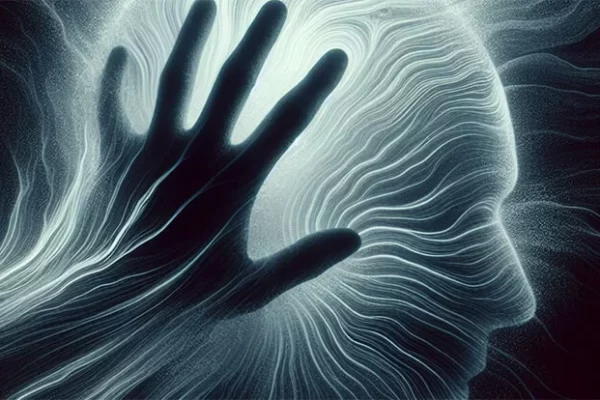A panic attack is a sudden and intense surge of fear or anxiety that can occur without an apparent cause and is accompanied by a number of physical and psychological symptoms. Although panic attacks do not pose a direct threat to life, they can significantly reduce its quality and cause serious problems in a person’s daily life.
Panic attacks are quite common. According to various studies, from 13% to 23% of adults experience a panic attack at least once in their lifetime. Additionally, 2-3% of the population develops panic disorder – a condition where panic attacks become regular and cause significant discomfort.
Panic attacks can have a substantial impact on a person’s quality of life:
- Physical health. Frequent panic attacks can lead to chronic stress, which negatively impacts the immune system and overall health.
- Mental health. The fear of a new panic attack can lead to anxiety disorders or depression.
- Social life. People suffering from panic attacks may start avoiding social interactions, leading to isolation and loneliness.
- Work and education. Panic attacks can interfere with job performance and academic achievement.
- Personal relationships. Persistent fear and anxiety can create tension in relationships with loved ones.

Symptoms of a Panic Attack
The human body is an amazing system, capable of instantaneously reacting to threats. The evolutionarily developed “fight or flight” mechanism once helped our ancestors survive in dangerous situations. However, in the modern world, this ancient system sometimes malfunctions, triggering in the absence of real danger.
A panic attack is a vivid example of such a malfunction, where the body and mind respond to an imagined threat as if it were a real danger. This condition can be compared to a fire alarm going off in a building where there is no fire. The anxiety seems justified, but there is no actual danger.
Interestingly, the symptoms of a panic attack often resemble those of other serious illnesses. This similarity often intensifies the fear and anxiety of the person experiencing the episode. Paradoxically, the fear of symptoms can amplify their intensity, creating a vicious circle of panic.
It’s important to understand that although the symptoms of a panic attack can be extremely unpleasant and frightening, they do not pose an immediate threat to life. Realizing this fact is the first step in overcoming the fear of panic attacks and returning to normal life.
A panic attack is characterized by a complex of physical and psychological symptoms, which can vary from person to person. It’s essential to note that these symptoms develop suddenly and reach maximum intensity within a few minutes.
Physical Symptoms
The physical manifestations of a panic attack can be very diverse and may include:
- Rapid heartbeat or tachycardia.
- Excessive sweating.
- Trembling or shaking.
- Shortness of breath or difficulty breathing.
- Feeling of choking.
- Chest pain or discomfort.
- Nausea or stomach discomfort.
- Dizziness, unsteadiness, or feeling faint.
- Sensation of heat or cold.
- Paresthesia (numbness or tingling).
These physical symptoms can be so intense that a person may think they are having a heart attack or another life-threatening condition.
Psychological Symptoms
In addition to physical manifestations, a panic attack is accompanied by several psychological symptoms:
- Intense fear or anxiety.
- Feeling of unreality (derealization).
- Feeling detached from oneself (depersonalization).
- Fear of losing control or going insane.
- Fear of dying.
These psychological symptoms often intensify the physical manifestations, creating a vicious circle that can increase the intensity and duration of the panic attack.

Causes of Panic Attacks
In a world where stress has become a constant companion for modern humans, panic attacks can be seen as a kind of distress signal from our psyche. Just as physical pain signals problems in the body, a panic attack may indicate accumulated emotional tension.
The causes of panic attacks often lie at the intersection of psychology and physiology. Our brain and body are constantly interacting, and an imbalance in one area inevitably affects the other. This explains why treating panic attacks requires a comprehensive approach that takes into account both psychological and physiological aspects.
Modern research in neurobiology is uncovering more aspects of the mechanisms underlying panic attacks. It turns out that our brain has remarkable plasticity, and negative experiences can “reprogram” neural connections, creating a predisposition to panic reactions.
At the same time, it’s important to understand that each case of panic disorder is unique. What triggers a panic attack in one person may have no effect on another. This individual diversity underscores the importance of a personalized approach to the diagnosis and treatment of panic attacks.
The exact causes of panic attacks are not fully understood, but researchers highlight several factors that may contribute to their development.
Stress and Anxiety
Chronic stress and elevated anxiety levels are among the main risk factors for developing panic attacks. Prolonged exposure to stressful situations can exhaust the body’s adaptive mechanisms and increase the likelihood of panic attacks.
Types of stressful situations:
- Problems at work or school.
- Financial difficulties.
- Conflicts in family or relationships.
- Death of a loved one.
- Moving or job change.
Traumatic Events
Experiencing traumatic events can serve as a trigger for developing panic attacks. Post-traumatic stress disorder (PTSD) is often accompanied by panic attacks as one of its symptoms.
Examples of traumatic events:
- Physical or sexual abuse.
- Participation in military actions.
- Natural disasters.
- Serious accidents or mishaps.
- Sudden loss of a loved one.
Genetic and Biological Factors
Research shows that genetic predisposition may play a role in the development of panic attacks and panic disorder. If close relatives have had panic attacks, the risk of occurrence increases.
Biological factors:
- Imbalance of neurotransmitters in the brain (such as serotonin).
- Increased brain sensitivity to stress.
- Malfunctions in the limbic system.
- Hormonal changes (e.g., during menopause).
Use of Stimulants and Other Substances
Abuse of certain substances or sudden cessation of their use can trigger panic attacks.
Substances that may cause panic attacks:
- Caffeine.
- Alcohol (especially during withdrawal).
- Nicotine.
- Marijuana.
- Cocaine and other stimulants.

Treatment and Management of Panic Attacks
Overcoming panic attacks can be compared to an exciting journey of self-discovery. This process involves learning to understand one’s body, recognizing early signs of anxiety, and effectively managing responses to stress. Each step on this journey is a small victory over fear and a gain in life control.
Modern science offers many tools to combat panic attacks. From innovative psychotherapy methods to advanced pharmacological developments—the arsenal of tools is constantly expanding. However, the key to success is often not the choice of a specific method, but rather persistence and faith in the possibility of recovery.
Treating panic attacks often leads to positive changes in other areas of life. Many people note that during therapy, they not only get rid of panic attacks but also acquire new stress management skills, improve relationships with others, and begin to treat their health more consciously.
It’s important to understand that the fight against panic attacks is not a sprint but a marathon. There are no quick fixes, but there is an opportunity to gradually, step-by-step, build a more harmonious and calm life. Each day without a panic attack is a small but significant reason for pride and joy.
Panic attacks are treatable, and many people can significantly improve their condition through various therapy methods. A comprehensive approach to treatment usually includes a combination of psychotherapy, medication, and self-help methods.
Cognitive-Behavioral Therapy (CBT)
CBT is one of the most effective methods for treating panic attacks and panic disorder. This type of psychotherapy helps patients identify and change negative thought patterns and behaviors associated with panic attacks.
Main elements of CBT for treating panic attacks:
- Psychoeducation. Providing information about the nature of panic attacks and the mechanisms behind them.
- Cognitive restructuring. Identifying and changing distorted thoughts and beliefs related to panic attacks.
- Exposure therapy. Gradual and controlled exposure to situations or physical sensations that cause fear.
- Learning relaxation techniques. Mastering deep breathing, progressive muscle relaxation and meditation.
- Behavioral experiments. Testing the realism of fears and beliefs associated with panic attacks.
Medication Treatment
In some cases, a doctor may prescribe medication to manage the symptoms of panic attacks. The most commonly used medications include:
- Selective serotonin reuptake inhibitors (SSRIs). These antidepressants, such as fluoxetine, sertraline, and paroxetine, are often the first-line medications for treating panic attacks.
- Serotonin and norepinephrine reuptake inhibitors (SNRIs). Medications in this group, such as venlafaxine, can also be effective.
- Benzodiazepines. Medications like alprazolam and clonazepam may be prescribed for short-term use in acute cases, but their use is limited due to the risk of dependence.
- Beta-blockers. Sometimes prescribed to control physical symptoms, such as a rapid heartbeat.
It’s important to note that medication treatment should only be conducted under the supervision of a doctor and is often combined with psychotherapy for the best results.
Self-Help Methods
There are a number of techniques and strategies that people suffering from panic attacks can use on their own to manage their condition:
- Breathing exercises. Techniques for deep and slow breathing, such as box breathing or diaphragmatic breathing, help reduce anxiety levels and prevent hyperventilation.
- Progressive muscle relaxation. Sequentially tensing and relaxing various muscle groups helps relieve physical tension.
- Mindfulness practice. Focusing on the present moment can help interrupt the cycle of anxious thoughts.
- Regular physical exercise. Moderate physical activity helps reduce stress levels and improves overall well-being.
- Keeping a journal. Writing down one’s thoughts and feelings allows for identifying panic attack triggers and tracking progress in treatment.
- “5-4-3-2-1” technique. This method involves using your five senses to ground yourself during a panic attack (e.g. name 5 things you see, 4 sounds you hear, etc.).
- Positive affirmations. Repeating positive statements can help counteract negative thoughts during panic attacks.

Prevention of Panic Attacks
Preventing panic attacks can be compared to the art of balancing. Like a tightrope walker who must constantly maintain equilibrium, a person prone to panic attacks learns to balance various aspects of life, avoiding tipping toward excessive stress or anxiety.
Interestingly, many prevention methods for panic attacks align with general recommendations for a healthy lifestyle. This is no surprise, as our mental and physical health are closely linked. Taking care of the body positively affects the mind, and vice versa.
An important part of preventing panic attacks is developing emotional intelligence. The ability to recognize and manage one’s emotions, as well as to understand others’ feelings, helps create a more stable and harmonious emotional environment, reducing the risk of panic attacks.
It’s worth noting that preventing panic attacks is not just a set of rules or restrictions. It is rather a way of life based on self-awareness, self-care, and continuous personal growth. The earlier a person begins to focus on prevention, the more likely they are to avoid serious issues in the future.
Although it is not always possible to completely prevent panic attacks, there are measures that can reduce the risk and improve overall mental health.
Managing Stress and Anxiety
Effective stress management is a key factor in preventing panic attacks. Here are some strategies that can help:
- Planning and Organization. Structuring your time and tasks helps reduce stress levels.
- Setting Boundaries. Learn to say “no” and establish healthy boundaries in both personal and professional life.
- Practicing Relaxation. Regular use of relaxation techniques, such as meditation or yoga, helps lower overall anxiety levels.
- Cognitive Techniques. Learn positive thinking skills and reframe stressful situations.
- Time Management. Effective time management helps reduce stress related to deadlines and overloads.
Healthy Lifestyle
Maintaining a healthy lifestyle plays an important role in preventing panic attacks:
- Regular Physical Exercise. Moderate physical activity helps reduce stress and improve mood.
- Balanced Nutrition. A healthy diet helps stabilize blood sugar levels and prevent mood swings.
- Adequate Sleep. Regular and quality sleep is essential for maintaining emotional balance and reducing stress levels.
- Limiting Caffeine and Alcohol. These substances can increase anxiety and trigger panic attacks.
- Quitting Smoking. Nicotine can increase anxiety and trigger panic attacks.
- Mindfulness Practice. Regular meditation and mindfulness practices help lower overall anxiety.
Social Support
A strong social support system can significantly reduce the risk of developing panic attacks:
- Maintaining Connections with Friends and Family. Regular communication with close people helps reduce stress and anxiety.
- Joining Support Groups. Connecting with people who also experience panic attacks can be very helpful.
- Openly Discussing Problems. Talking about your feelings and fears with trusted people helps reduce anxiety intensity.
- Seeking Professional Help. Do not hesitate to reach out to a psychologist or therapist at the first signs of anxiety or panic attacks.

How to Help Someone During a Panic Attack
Encountering someone having a panic attack can make us a kind of “anchor” that helps ground them in reality. Our calmness and confidence can serve as a lifeline, helping the person weather the storm of emotions and return to a state of equilibrium.
Helping during a panic attack is a delicate art that requires a balance between support and non-interference. Overly active attempts to “save” the person can increase their anxiety, while detachment can leave them feeling isolated and helpless.
It’s important to remember that every person is unique, and what helps one may not work for another. Therefore, the key skill in providing help during a panic attack is to listen and respond sensitively to the needs of the individual in that moment.
Offering help during a panic attack can not only be beneficial for the person experiencing the episode but also an enriching experience for the helper. It’s a chance to show empathy, develop communication skills in stressful situations, and better understand the nature of anxiety.
If you witness someone having a panic attack, here are some ways to help:
- Stay Calm. Your calmness will help the person feel safe.
- Do Not Panic. Remember that although a panic attack can be frightening, it is not life-threatening.
- Be Present. Ask if they need help and stay with them if they want.
- Speak Calmly and Confidently. Remind the person that it is a panic attack and will soon pass.
- Suggest Breathing Exercises. Help the person focus on their breathing, suggesting to breathe slowly and deeply with you.
- Distract Them Gently. Try softly distracting them, like asking them to name five objects of a certain color in the room.
- Suggest Moving to a Quiet Space. If the person is in a crowded place, offer to move to a quieter area if possible.
- Acknowledge Their Feelings. Avoid phrases like “Calm down” or “Everything’s fine.” Instead, acknowledge that they are having a tough time but it will pass.
- Offer Water. After the attack, offer them water, as dehydration can occur during a panic attack.
- Support Them After the Attack. Once the panic attack subsides, ask if there’s anything else you can do to help.

Myths and Misconceptions About Panic Attacks
Panic attacks are surrounded by many myths, like a fog obscuring the true nature of this condition. Misconceptions passed from person to person often become an additional source of fear and anxiety for people who suffer from panic attacks.
Dispelling myths about panic attacks is an essential step toward creating a more understanding and supportive society, where people with anxiety disorders can feel accepted and receive the help they need without fear of judgment.
It is important to understand that fighting myths about panic attacks is an ongoing process. As our knowledge of anxiety disorders advances, we must be ready to adjust our views and spread accurate, science-based information.
Here are some common misconceptions about panic attacks and their rebuttals:
Myth 1: A Panic Attack Can Lead to a Heart Attack
- Reality. While the symptoms of a panic attack can resemble those of a heart attack, a panic attack itself cannot cause a heart attack. However, if you’re unsure about your symptoms, it’s always best to seek medical help.
Myth 2: People with Panic Attacks Are Mentally Unstable
- Reality. Panic attacks are a common condition that can happen to anyone. They are not a sign of mental instability or weakness.
Myth 3: You Can Stop a Panic Attack by “Pulling Yourself Together”
- Reality. A panic attack is an intense physiological response that cannot be stopped by willpower alone. However, therapy and practice can help manage symptoms and reduce their intensity.
Myth 4: Panic Attacks Are Always Triggered by a Specific Cause
- Reality. While some panic attacks may be triggered by certain situations or events, they can also occur without an apparent reason.
Myth 5: Medications Are the Only Way to Treat Panic Attacks
- Reality. While medication may be helpful for some people, psychotherapy (especially cognitive-behavioral therapy) and self-help methods are also very effective in treating panic attacks.

Conclusion
A panic attack is a complex, multifaceted phenomenon that affects various aspects of a person’s life. It can be a frightening and disorienting experience, but it is important to remember that this condition is treatable and manageable. Modern medicine and psychology offer a wide range of effective methods to combat panic attacks, from cognitive-behavioral therapy to medication and self-help techniques.
The key to successfully overcoming panic attacks lies in a comprehensive approach, combining professional help, support from loved ones, and the individual’s active efforts. It’s crucial not only to treat symptoms but also to work on addressing the root causes of anxiety, developing stress management skills, and establishing a healthy lifestyle.
Fighting panic attacks is not just about returning to a normal state but also an opportunity for personal growth and self-discovery. Many people who have successfully overcome this condition note that the experience helped them become more resilient to stress, improve relationships with others, and gain a new perspective on life.
Society plays an important role in supporting people suffering from panic attacks. Dispelling myths, spreading reliable information, and creating an atmosphere of understanding and acceptance—all contribute to a world where people are not afraid to seek help and can receive the support they need. Together, we can create a world where a panic attack is not a sentence but merely a temporary obstacle on the path to a full and happy life.




